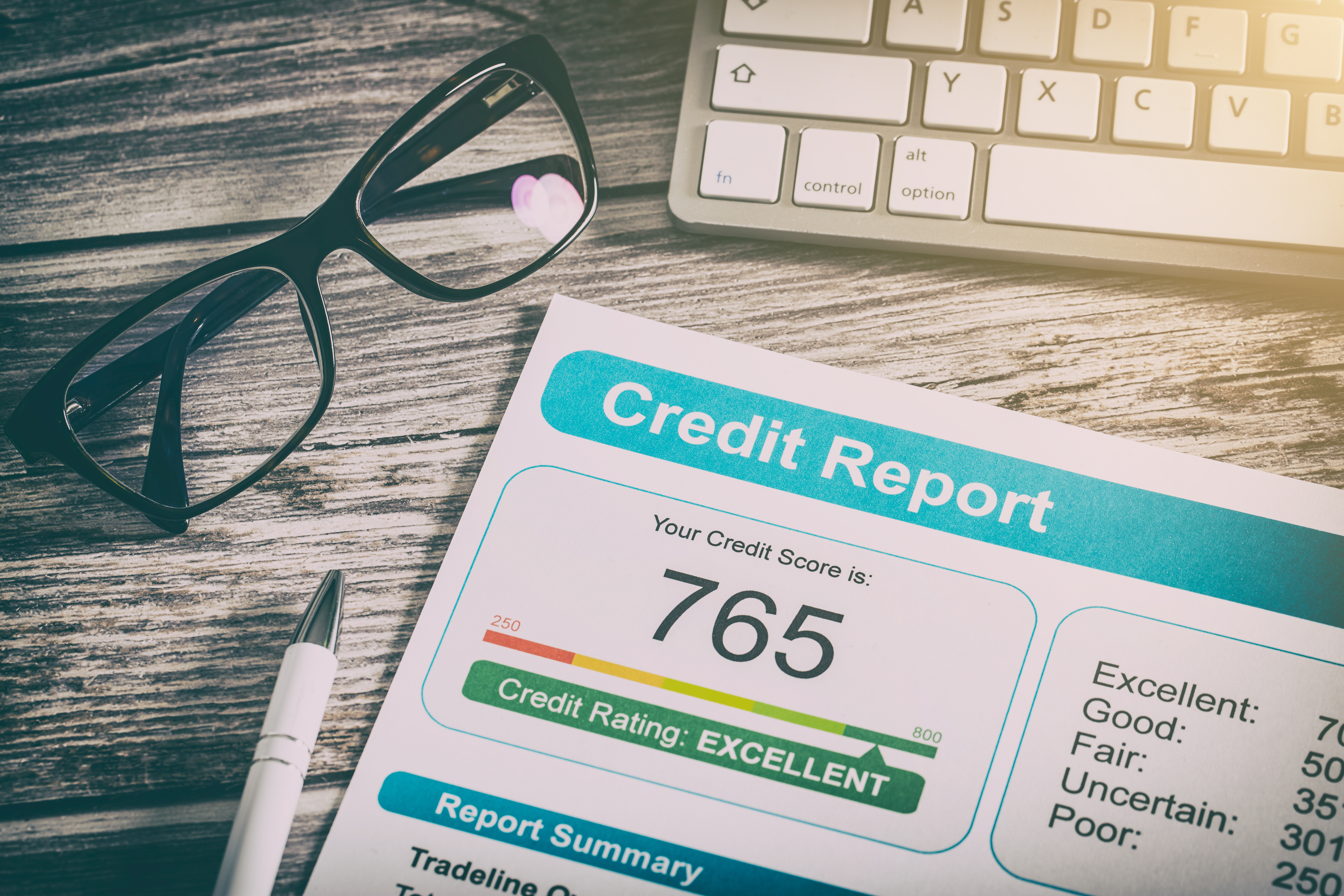
Disclaimer: Blog written by Joshua Escalante Troesh, CFP on behalf of Purposeful Finance (see below for full copyright information). The views and opinions expressed in this blog are solely those of the original authors and other contributors. These views and opinions do not necessarily represent those of FinancialEdge Credit Union.
You can think of a credit score as your report card for how effectively you manage your finances, specifically your loans. The score is a mathematical estimation of how you handle credit and how likely you are to default on a future loan. The myth is that a credit score is a measure of how much debt you have, and that racking up more debt will result in a higher credit score. The truth, however, is racking up unnecessary debt will lower your credit score.
A credit score measures how responsibly one manages debt and how likely they are to have financial difficulties. A person who has one loan, their car loan, and pays it on time every month will have excellent credit even though they don’t have much debt. Conversely, a person who has racked up significant credit card debt, maxing out all their cards and paying minimum payments, will have a significantly lower credit score even if they are making payments on time. Their score is lower because they are in a worse financial position.
CREDIT SCORE MODELS
Although multiple scoring models exist, there are two major credit scoring models right now. The VantageScore and the FICO model. VantageScore is a newer model developed by the three credit reporting agencies. Although most banks use the model, they mostly use it for marketing purposes. Financial institutions still use the FICO score for the vast majority of their lending decisions.
VANTAGE SCORE
The VantageScore rates Payment History, Age & Type of Credit, and Capacity all as highly important. Of moderate importance is how much Debt You Owe in Total, with the higher the debt the worse it hurts your score. Finally, it rates Recent Activity with Credit (new debt and inquiries) and how much Available Credit you could pull out (credit card limits you are already approved for) as less important.
FICO SCORE
The FICO score rates things very similarly, with Payment History making up 35% of your score, Credit Capacity making up 30% of your score, the Types of Loans you have making up 15% of your score, New Debt and Inquiries making up 10%, and How Long You’ve had Credit making up the final 10%.
PAYMENT HISTORY
Your payment history is the single most important factor in your credit score. Protecting a perfect payment history of always paying your debts on time is the most important thing you can do to maintain good credit. This means not borrowing more than you can afford and keeping your total debt payments to a very small percentage of your overall income.
STRATEGY
The best strategy for improving your Payment History is to follow the budgeting process outlined in the following section and setting up online bill pay on your checking account’s website to pay your loans automatically.
CREDIT CAPACITY
Credit cards are also a big player in your credit score, making up the second biggest factor; Capacity. Capacity refers to how much of your available revolving credit you have used. Revolving credit is credit that has a limit, but you don’t borrow all the money at once. You can borrow what you want, then pay all or some of it back, and can borrow more again up to the limit. Credit cards are the most common form of revolving credit, but any line of credit like a HELOC (a second mortgage) is also revolving credit.
You calculate your capacity by adding up all the balances you owe and divide them by the total limits you have on all your accounts. Let’s say you have 3 credit cards:
- You owe $700 with a $1,000 limit
- You owe $800 with a $1,000 limit
- You owe $1,500 on with a $2,000 limit.
Your total debt of $3,000 (700 + 800 + 1,500) is divided by the total limit of $4,000 (1,000 + 1,000 + 2,000). To get your capacity simply do the math: $3,000/$4,000 is 75% -- because you owe 75% of the total amount you could borrow.
STRATEGY
The more of capacity you have used (taking out more debt) the lower your score goes. Excellent Capacity is owing around 2%-4% of your limits. Owing a lot on credit cards also means you are running up large amounts of debt and increasing your interest costs.
The best strategy for improving the Capacity factor of your score is to stay out of credit card debt and to pay your cards down to $0 each and every month.
MIX OF CREDIT
Your mix of credit refers to the types of loan accounts you have. The credit score likes certain loans and dislikes other loans, and the presence of each type of loan will impact your score accordingly. The two main areas the score looks at are Installment vs Revolving loans and Secured vs Unsecured loans.
Installment loans have a positive impact on your credit score, while the existence of revolving loans negatively impact your score. Installment loans are loans where you borrow a specified amount of money up front and then pay it back in equal installments. Revolving loans are like the revolving door of lending, with money flowing in and out month to month. In addition to being better for your credit, installment loans have significantly lower interest rates than revolving loans, so less of your money goes to the bank.
Secured loans have a positive impact on your score, while Unsecured loans have a negative impact. Secured loans are loans where you have put up collateral to secure the loan. If you don’t pay the loan, the lender has something to take away from you. With unsecured loans the lender doesn’t have anything to take from you. Auto loans and home loans are both examples of secured loans, which help your score. Secured loans have the additional benefit of offering significantly lower APRs than Unsecured loans.
STRATEGY
The best strategy for managing the Mix of Credit is to only get debt that is Secured Installment debt and avoid other types of debt. Debt on credit cards, which is both Unsecured and Revolving (a double negative) should be avoided.
NEW DEBT
New Debt is made up of two areas, the new loans you have taken out, and the new application you have made for loans. Your credit score looks at how many new debts you have taken out in the last few years and punishes you for being too loan crazy. Even applying for debt hurts your score. Pulling your own credit to check for inaccuracies, however, doesn’t harm your score.
New debt makes it harder to budget and reduces your future income. In order to minimize the negative impact on your budget and your score, try not to take out more than one new loan each year. Giving yourself time to get comfortable with the new loan payment is important before you start adding to that debt with more loan payments. Additionally, if you are taking out multiple loans each year, it probably is signaling you have a debt problem which needs to be addressed.
STRATEGY
The best strategy is to avoid applying for new debt for at least a year before making any major long-term decision that could require credit, such as buying a car, renting an apartment, or getting a new job.
AGE OF CREDIT STRATEGY
The final category is how long you’ve managed debt, especially managing it well. The best strategy here is to just get old and continue to use debt wisely.
You should also minimize the number of new loans you have. As you open new loans and close old ones, the average age of all your debts gets shorter. Playing credit card musical chairs, where you open new cards to get the 0% offers on transferring old debt resets the clock each time you do it. And those 0% offers are often extremely expensive.
Copyright:
Written by Joshua Escalante Troesh, CFP for Purposeful Finance on August 12, 2019
Understanding Your Credit and Credit Score Strategies — purposeful.finance (purposefulfinance.org)
« Return to "Blogs"






